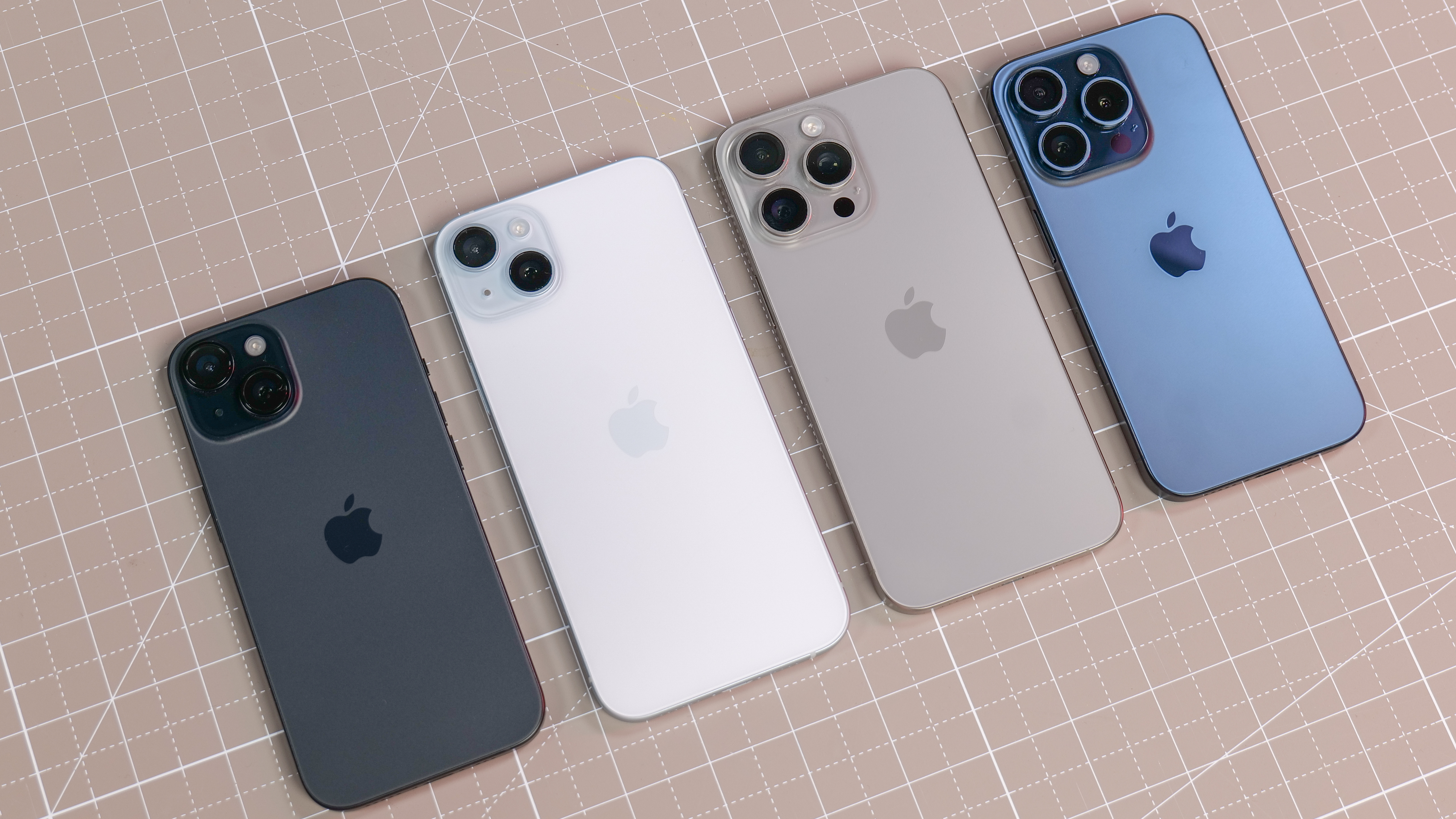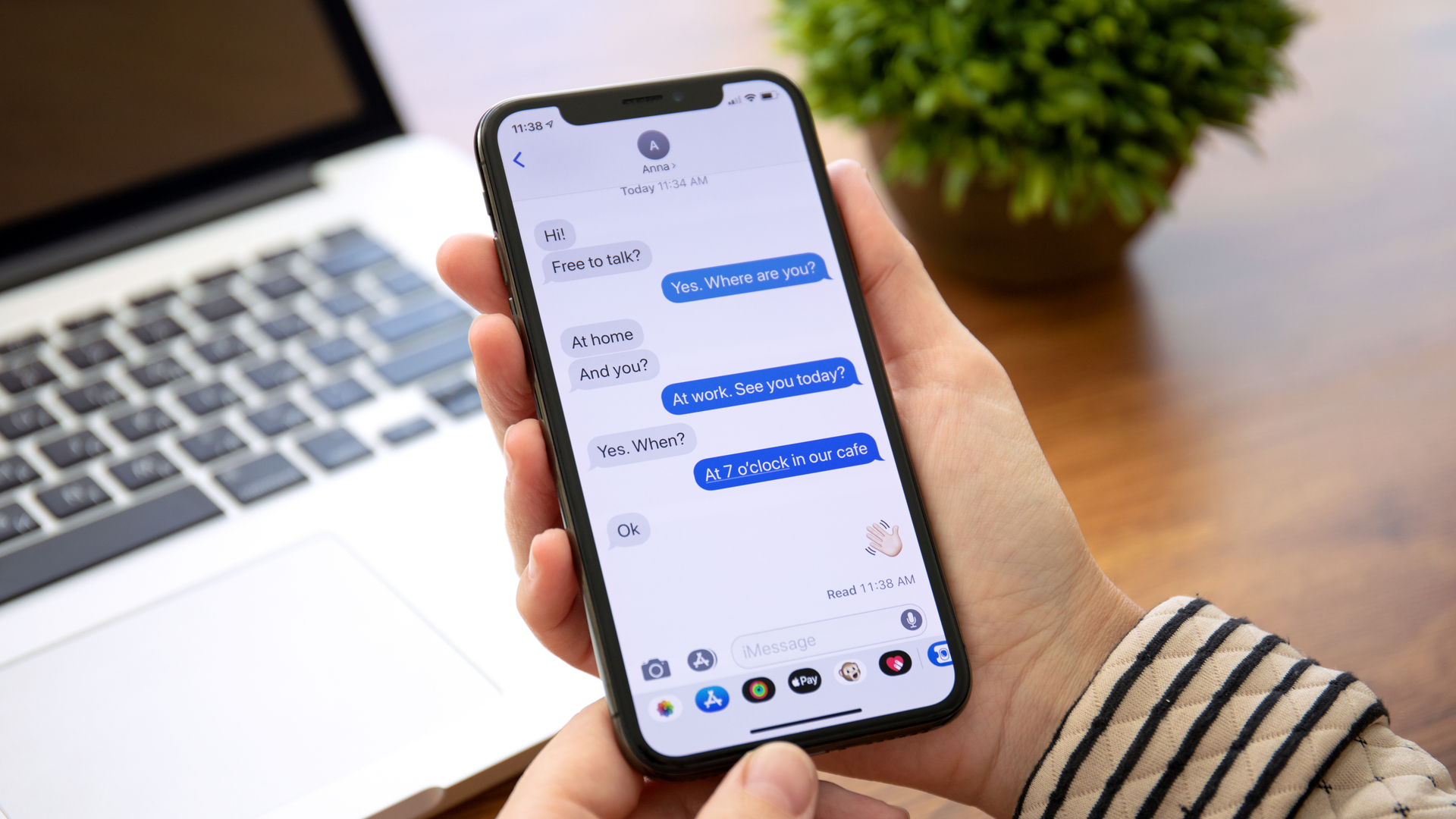RCS messaging is coming to iPhones next year — what that means for you
iPhones are getting a serious messaging upgrade next year

In a move that nobody saw coming before the death of the universe, Apple has announced it will be adding support for the Rich Communication Service (or RCS) messaging standard to the iPhone. It’s something Apple has resisted for a long time, in favor of promoting the iPhone-exclusive iMessage.
This move has the potential to radically change the way Android and iPhone users interact. iPhone owners aren’t likely to notice much, and it’s not as though messages from Android users will start coming in blue bubbles. But for Android users, the act of messaging an iPhone owner is going to change quite a bit — and for the better.
What is RCS?
Currently if you send messages between iPhones, it gets sent via Apple’s proprietary iMessage service. This offers end-to-end encryption, and the ability to send all sorts of extra digital files like voice messages, hi-resolution images and videos, files, stickers and so on.
Messages between Android and iOS have no such advancements, so you’re stuck using the same SMS and MMS services that have existed for decades — and haven’t really changed since their inception. Not only are these services basic, they’re also hilariously insecure compared to modern, encrypted messaging formats.
RCS was a standard developed to try and solve some of these problems, and eventually gained the backing of the likes of Google and Samsung — which was key to its addition to the Android OS. It comes with advanced features like read receipts, live-typing indicators, Text over IP as well as better support for media files and the like.
End-to-end encryption is also available, though not every RCS messaging service has added it. Google Messages, the default texting app on a bunch of Android phones, does offer this by default— meaning it’s a heck of a lot more secure than SMS. Over the years it’s evolved to resemble Apple’s iMessage and has effectively become the Android equivalent.
The thing to remember about RCS is it’s not an app, it’s a protocol that phone makers have to implement on their devices. In recent years Apple has faced increasing pressure from the likes of Google, but has resisted. When asked about improving that relationship by a reporter, whose mom uses Android, Apple CEO Tim Cook simply said “buy your mom an iPhone”.
Sign up to get the BEST of Tom's Guide direct to your inbox.
Get instant access to breaking news, the hottest reviews, great deals and helpful tips.
It’s long been assumed that Apple saw RCS as a threat to iMessage, and in the process something that could negatively impact iPhone sales. Clearly, things have changed.
How Apple will implement RCS and how it affects you

RCS is set to arrive on iPhone in 2024, and the key thing you should know about Apple’s adoption of RCS is that iMessage isn’t going anywhere. So iPhone users won’t actually see much differences, especially if they generally only text with other iPhone users. Apple has already confirmed that the green/blue bubble divide will be continuing, it’s just that the way iPhone users will text Android is changing.
Crucially this also doesn’t mean iMessage is being opened up to other platforms. Apple is keeping that as an iPhone exclusive. From the sounds of things all Apple will be doing is changing the default protocol iPhones use when interacting with no Apple devices.
Apple has already confirmed that the green/blue bubble divide will be continuing, it’s just that the way iPhone users will text Android is changing.
Though it will no doubt be reliant on the Android user using an RCS-compliant messaging app like Google Messages. Apparently SMS and MMS will still be available as a fallback, should one side of the conversation not have RCS or iMessage. It’s unclear whether these bubbles will be green, or if there will be another way of differentiating them. It would probably be a good idea, to show users how secure their non-Apple chats are.
The key benefit here is that RCS messaging offers encryption, something lacking in SMS-based messaging. While Apple hasn’t confirmed what sort of extra security RCS will offer on iPhone, it said it will be working with members of the GSMA, who manage the RCS protocol, to improve the security and encryption. The company also told 9to5Mac that it won’t add any proprietary encryption on top of RCS — instead preferring to work on improving the standard
Apple has also confirmed that iPhone RCS will feature the ability to share locations within a text chain, alongside the option to send messages over mobile data or Wi-Fi.
While not specifically mentioned it likely means MMS-based limitations on media file sharing will also be gone. Any Android user that’s been sent a video file from an iPhone will know that the video quality tends to be pretty appalling. At the very least you should be able to receive media files in much better resolution. Not full size resolution, I expect, but in a heck of a lot better quality than is permissible now.
It’s totally unclear how video calling will work, since both Apple and Google have their own rival video calling services built into their respective messaging apps.
Bottom line
There’s a lot we still don’t know about Apple’s adoption of RCS, other than the fact it will be happening sometime in late 2024. We may end up hearing more about the change over the course of the next few months, but my money is on getting all the major details at WWDC next June.
But between the adoption of Qi2 wireless charging, USB-C and now RCS, it goes to show that Apple is taking some key steps towards standardization. Though maybe not for the best reasons, especially since regulators in Europe are pushing for iMessage to be regulated and opened up to other platforms.
But hey, at the very least it means better security and functionality for cross-platform communications — and without having to resort to using third-party services in the process. We can all be grateful for that, even if it means waiting another year.
More from Tom's Guide

Tom is the Tom's Guide's UK Phones Editor, tackling the latest smartphone news and vocally expressing his opinions about upcoming features or changes. It's long way from his days as editor of Gizmodo UK, when pretty much everything was on the table. He’s usually found trying to squeeze another giant Lego set onto the shelf, draining very large cups of coffee, or complaining about how terrible his Smart TV is.
